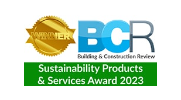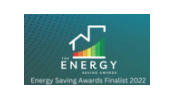A major contributing factor to poor air quality, nitrogen oxides are a group of gases that are mainly formed during the combustion of fossil fuels. The dominant portion of these gases is nitric oxide (NO) which in turn can react with other gases in the atmosphere to form nitrogen dioxide (NO₂) the most toxicologically significant of the nitrogen oxides. These reactions take place very quickly and are reversible, so the two gases are referred to together as NOx. Short-term exposure to concentrations of NO₂ can cause lung irritation and respiratory infections, but medical studies have also linked the gas to cancer, asthma, strokes, and heart disease. In addition, NOx can cause changes to the environment, so consideration should be given to its control as part of your organisation’s sustainability activities.
Typically, a by-product of the combustion of hydrocarbon fuels, it is especially problematic in city centres due to idling traffic. In large parts of the UK, the atmospheric levels of NO₂ are considerably higher than European legal limits and the Royal College of Physicians believe it directly leads to as many as 40,000 deaths each year with an estimated cost to the country of £20 billion in healthcare and lost working days.
Critically as greater political and legal weight is brought to bear on addressing climate change it is worth remembering that nitrogen oxides also act as precursors for the formation of ozone, which is not only damaging to health but has adverse effects on the environment through oxidative damage to vegetation. Introduction of N to the environment both directly as a gas and in precipitation can also change soil chemistry and affect biodiversity.
This has led to widespread recognition that more needs to be done to address the issue of NOx, from transport to energy production, distribution, and consumption in buildings.
Traditional energy generation by coal, gas and oil-fired power stations comes with several issues, including being NOx heavy. It, therefore, became popular to look at the alternatives: renewables which help with both carbon and NOx emissions. As such, low carbon electricity’s share of generation has risen delivering a major shift away from generation in large power stations. Since 1990, wider industrial emissions of nitrogen oxides to air have reduced by 74%, although estimates of projected emissions to 2030 suggest further action is required if we are to meet government emission reduction targets. These industrial reductions mean that most of a city’s current air pollution and NOₓ now arise from road traffic and buildings.
The most recent published annual air quality assessment providing data from 2010 until 2019, shows the UK was in compliance with commitments to current emission ceilings for nitrogen oxides. However, the UK continues to be non-compliant with the limit value placed on the annual mean NO₂ concentration at several locations in urban areas. At these locations, it has been estimated that up to 80% of the NO₂ concentration originates as NOx emissions from road transport. But buildings still stand as a key potential contributor to the other 20%.
Managing NOx Emissions From Commercial Properties
In 2018, the European Union’s Energy-related Products Directive (ErP) was used to begin phasing out the installation of less efficient equipment across Europe, including the UK. This would be achieved by establishing minimum performance standards for new equipment, with greater focus placed on heating and water heating performance in buildings. The new ErP directive enforcing maximum NOx emissions from boilers and water heaters which were set at 56mg/kWh for gas/liquefied petroleum gas (LPG) and 120mg/kWh for oil-fired products. At the time the EU predicted the new directive would produce a 20% reduction in energy consumption and emissions when replacing older equipment with ErP-compliant products
The drive towards net zero and the reduction of carbon in buildings is helping to further drive down NOx and where new builds are opting for heat pump and direct electric hot water and heating applications gas to the premises is excised. So no gas, no flues, no NOx. Refurbishing existing properties is more complicated, with low-temperature Air Source Heat Pump (ASHP) based systems typically unable to efficiently address demands. Under these scenarios, a combination of solar thermal and gas top-up for water heating is preferable and leaves sites futureproofed for next-generation green gas technologies. Realistically hydrogen grid connectivity is unlikely for the majority of the UK until the mid-2030s at the earliest, so attention needs to be applied to how gas-based systems can be optimised now to reduce emissions to levels even lower than those established under the ErP directive.
To improve combustion efficiency, condensing gas water heaters and boilers operate so that the water vapor in the exhaust – which contains about 464 kJ/kg of latent energy – condenses on the heat exchanger and not in the flue or outside the building. Designed so that the highest efficiency is at the low end of the firing range, condensing boilers typically operate at 94-95% combustion efficiency. Correctly sized and professionally commissioned, a cascade system for larger demands with high-efficiency pre-mix burners provides a high 1:20 modulation ratio. This large modulation range, along with built-in cascade control ensures that efficiencies are maximised no matter the heating load of the building. With the input of the appliance easily altered to closely match the load, the system is better able to derive as much heat out of the exhaust gases as possible.
With a high-efficiency pre-mix Fecralloy burner, such as employed in the Adveco MD & AD product ranges, ideal combustion efficiency can now be achieved of up to 107% (net)/98% (gross) reducing energy costs and producing ultra-low emissions. The low CO (19ppm) and NOx (27mg/kWh) emissions, from a hot water system built around a high efficiency condensing water heater or boiler (Class 6 appliance) easily satisfy the requirements of the current Energy-related Products (ErP) directive.
In the drive to achieve net zero, and control dangerous emissions, there remains a clear need to address legacy ‘dirty’ buildings. Currently ignored in terms of mandated policy or government support, commercial building refurbishment represents a core challenge for the UK’s climate future. Organisations looking to make steps towards a more environmentally friendly built environment may initially reject any fossil fuel-based option, but the reality is modern systems are advantageous both economically and environmentally and they bridge towards more enveloping carbon neutral and renewable options. If your building’s hot water or heating system predates 2018 then there are advantages to be gained from switching to the latest generation of gas-fired water heaters and boilers, if your system is closer to 15 or 20 years old then you really should be giving serious thought to upgrading appliances. The addition of solar thermal preheat is then going to take your system to the next level in terms of cost and carbon reduction into the 2030s and beyond.













